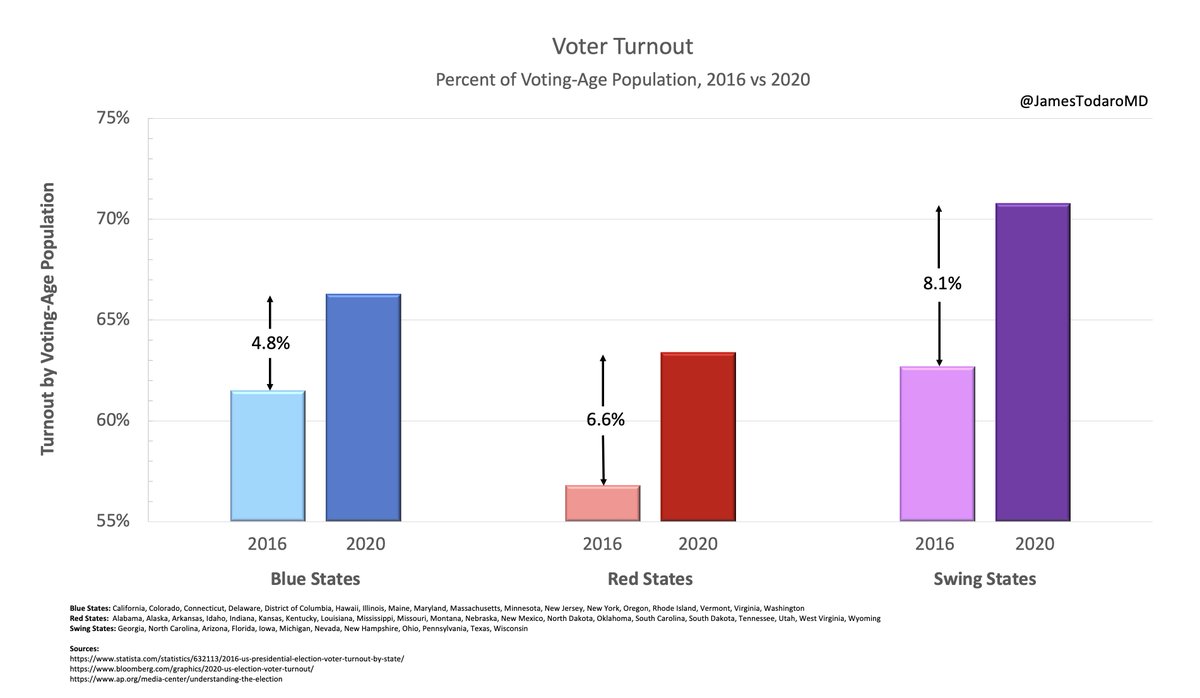
1/ Vaccine mandates are quickly moving from "conspiracy theory" to reality.
In a recent interview, Dr. Fauci asserted that the only return to "normal" is vaccination in 75-80% of the US.
Let's assess if that is really true.

In a recent interview, Dr. Fauci asserted that the only return to "normal" is vaccination in 75-80% of the US.
Let's assess if that is really true.


2/ The Pfizer and Moderna COVID-19 vaccines aim to serve two purposes:
a) Protect individuals from symptomatic infection. Trials estimate ~95% efficacy for both vaccines.
b) Decrease the transmission of SARS-CoV-2. This benefit is still unconfirmed.
nejm.org/doi/full/10.10…
a) Protect individuals from symptomatic infection. Trials estimate ~95% efficacy for both vaccines.
b) Decrease the transmission of SARS-CoV-2. This benefit is still unconfirmed.
nejm.org/doi/full/10.10…
3/ In regards to strictly the personal benefit of protection, most Americans would agree that the decision to get the COVID-19 vaccine should be a personal choice.
The debate becomes murkier though when assessing the risk of the unvaccinated infecting those who are vaccinated.
The debate becomes murkier though when assessing the risk of the unvaccinated infecting those who are vaccinated.
4/ Again, it is unknown if the vaccine decreases SARS-CoV-2 transmission.
Hypothetical #1: If the vaccine has little to no effect in decreasing transmission, then the argument that vaccine mandates are necessary to protect others is invalidated.
Result: No vaccine mandates.
Hypothetical #1: If the vaccine has little to no effect in decreasing transmission, then the argument that vaccine mandates are necessary to protect others is invalidated.
Result: No vaccine mandates.
5/ Hypothetical #2: If the vaccine decreases number of symptomatic COVID-19 cases, it is certainly possible that it decreases transmission of SARS-CoV-2 (even with some asymptomatic spread among the vaccinated).
Result: Debate on vaccine mandates continues.
Result: Debate on vaccine mandates continues.
6/ Let's explore Hypothetical #2 assuming 100 million Americans get vaccinated.
- At 95% efficacy, 5 million vaccinated Americans are still susceptible to COVID-19
- At an IFR of 0.75%, ~40k vaccinated persons may die from COVID-19
This is on par w/ annual deaths from the flu.
- At 95% efficacy, 5 million vaccinated Americans are still susceptible to COVID-19
- At an IFR of 0.75%, ~40k vaccinated persons may die from COVID-19
This is on par w/ annual deaths from the flu.
7/ NOTE: The above number is under trial conditions and may vary in the real world (e.g. changes in disease prevalence could alter vaccine effectiveness).
Through increasing herd immunity (natural & vaccinations), COVID-19 prevalence may decrease—resulting in even fewer deaths.
Through increasing herd immunity (natural & vaccinations), COVID-19 prevalence may decrease—resulting in even fewer deaths.
8/ Are 40k deaths sufficient to eliminate personal choice on vaccinations through mandates?
Let's compare to the seasonal flu.
Over the past 5 years, flu vaccine effectiveness varies from 19%-48% with 12k to 40k deaths annually in those who got the jab.
cdc.gov/flu/vaccines-w…
Let's compare to the seasonal flu.
Over the past 5 years, flu vaccine effectiveness varies from 19%-48% with 12k to 40k deaths annually in those who got the jab.
cdc.gov/flu/vaccines-w…
9/ The projected 40k COVID-19 deaths in vaccinated persons is within the range of flu deaths among the vaccinated (12k to 40k).
The flu vaccine has never been mandated in the general population or required for air-travel with the exception of specific occupations.
The flu vaccine has never been mandated in the general population or required for air-travel with the exception of specific occupations.
10/ Safety profile differences:
The flu vaccine has been studied and tested for decades with a fairly well identified safety profile.
The COVID-19 vaccine, on the other hand, is an entirely novel mRNA vaccine developed and tested over mere months.
The flu vaccine has been studied and tested for decades with a fairly well identified safety profile.
The COVID-19 vaccine, on the other hand, is an entirely novel mRNA vaccine developed and tested over mere months.
11/ In conclusion, assuming 95% efficacy at preventing COVID-19 and even with decreased transmission, it would be unprecedented on multiple levels to broadly mandate this vaccine.
Vaccination should continue to be an informed decision between a patient and their doctor.
Vaccination should continue to be an informed decision between a patient and their doctor.
• • •
Missing some Tweet in this thread? You can try to
force a refresh






